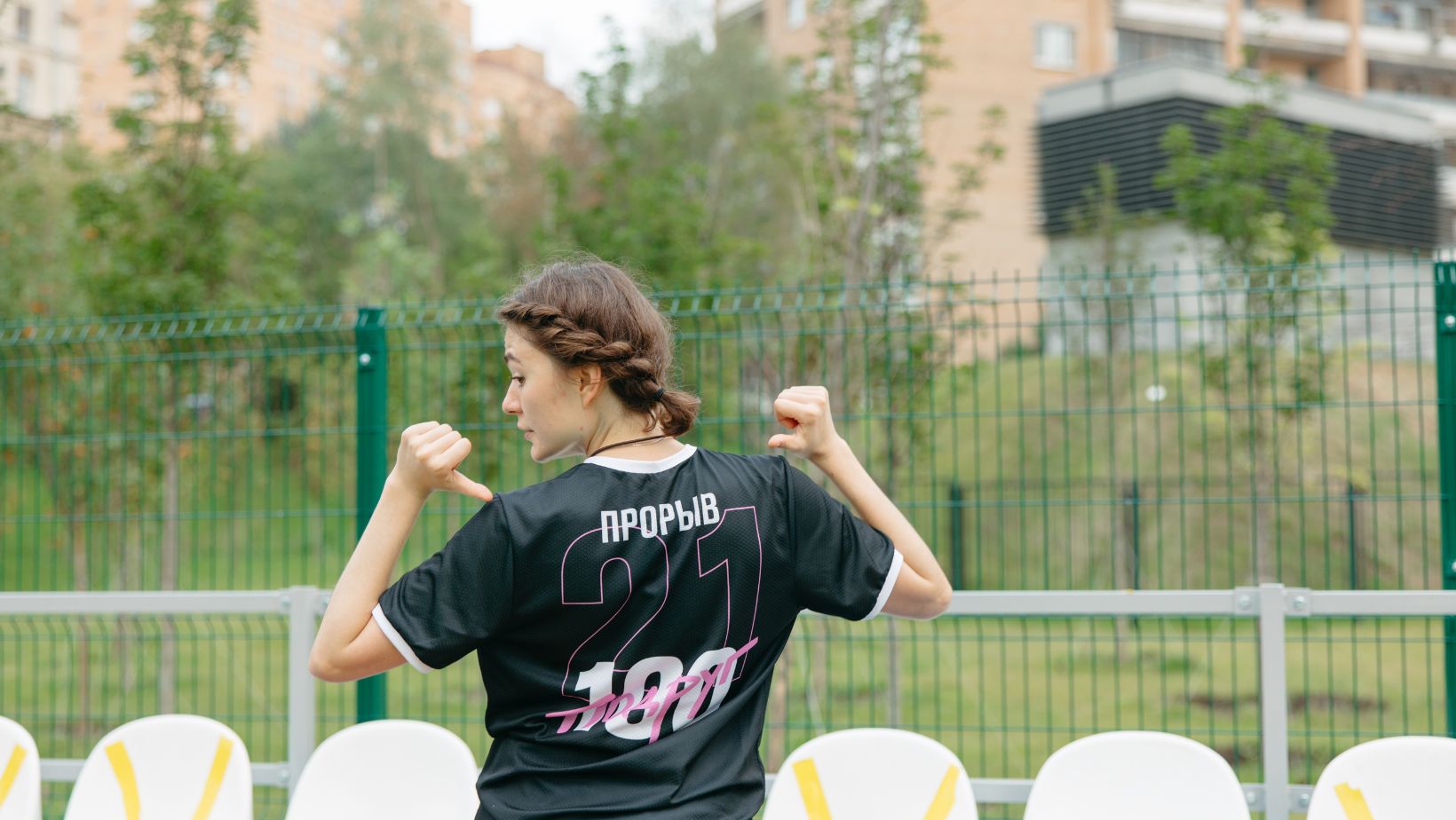Key Takeaways
- Increased Participation: Female soccer participation has surged from 0.1 million in 1972 to over 3.4 million in 2020, highlighting the growing interest and support for girls in the sport.
- Empowerment and Leadership: Organizations like Girls on the Run and the USWNT promote not only sports skills but also essential leadership and empowerment values among young girls.
- Physical and Mental Benefits: Girls playing soccer experience enhanced physical fitness, improved self-esteem, reduced stress, and stronger social connections, contributing to overall well-being.
- Challenges to Address: Gender stereotypes and limited access to resources can hinder girls’ participation, underscoring the need for advocacy and equal funding for girls’ soccer programs.
- Role Models Matter: Prominent female athletes such as Mia Hamm, Abby Wambach, and Megan Rapinoe serve as powerful role models, inspiring young girls to break barriers and pursue their dreams in soccer and beyond.
- Bright Future Ahead: With continued investment and support, the future of girls playing soccer looks promising, encouraging more participation and recognition in the sport.
Soccer has long been celebrated as a sport that transcends boundaries, uniting players and fans worldwide. In recent years, girls playing soccer have gained remarkable visibility, breaking stereotypes and showcasing their incredible talent on and off the field. As more young girls lace up their cleats, they not only challenge traditional gender roles but also inspire a new generation of athletes.
The rise of girls’ soccer programs and leagues has created a vibrant community where teamwork, discipline, and empowerment thrive. With increased media coverage and support from organizations, the future looks bright for female soccer players. This article delves into the impact of girls playing soccer, highlighting their achievements and the growing recognition of their contributions to the sport.
Girls Playing Soccer
The rise of girls playing soccer shows significant growth in participation and recognition. According to the Women’s Sports Foundation, female soccer participation in the U.S. increased from 0.1 million in 1972 to over 3.4 million in 2020. This surge is attributed to grassroots programs, school teams, and community leagues.
Organizations like Girls on the Run and the United States Women’s National Team (USWNT) advocate for girls’ involvement in soccer, emphasizing empowerment and leadership. The visibility of female athletes, such as Megan Rapinoe and Alex Morgan, inspires young girls to chase their dreams in soccer and beyond.
Media coverage plays a crucial role in this rise. Events like the FIFA Women’s World Cup attract millions of viewers, boosting support for girls’ soccer at all levels. Increased investment from sponsors also enhances funding for youth programs, fostering talent development.
From casual pick-up games to competitive leagues, girls’ soccer provides camaraderie and skills. Building confidence and teamwork, it cultivates friendships that last a lifetime. As interest grows, schools and clubs expand their offerings, creating more opportunities for girls to participate in soccer.
The rise of girls playing soccer represents a significant shift in sports culture, highlighting achievements that challenge traditional norms. The movement continues to evolve, encouraging young athletes to pursue their passion in soccer while laying the groundwork for future generations.
Benefits of Girls Playing Soccer
Girls playing soccer experience numerous benefits that enhance their overall well-being. These include key advantages in both physical and mental health.

Physical Health Advantages
Engaging in soccer promotes cardiovascular fitness, improving heart health and endurance. Girls enhance muscle strength and flexibility through regular practice and gameplay. Participation in soccer also aids in maintaining a healthy weight, reducing the risk of obesity. The sport improves coordination, balance, and agility, critical for physical development. Furthermore, girls participating in soccer often develop healthy lifelong habits related to exercise and nutrition.
Mental Health Benefits
Playing soccer significantly boosts self-esteem and confidence. Girls gain a sense of accomplishment through teamwork and personal achievements within the sport. Soccer fosters resilience, teaching players to handle wins and losses gracefully. Regular physical activity in soccer leads to reduced stress, anxiety, and depression. Additionally, social interactions during practices and games strengthen friendships and support networks, contributing to improved mental well-being.
Overcoming Challenges in Girls Playing Soccer
Girls playing soccer face various challenges that can hinder their participation and success in the sport. Addressing these issues, such as gender stereotypes and access to resources, is essential for fostering an inclusive environment.
Gender Stereotypes
Gender stereotypes often discourage girls from participating in sports like soccer. Societal beliefs that prioritize traditional feminine qualities may lead to negative perceptions of girls as athletes. Many girls encounter pressure to conform to these stereotypes, which can diminish their confidence and enthusiasm for the game. Organizations focused on female empowerment, such as the Women’s Sports Foundation, work to dismantle these biases by promoting positive media representation and spotlighting successful female athletes. Educational programs raise awareness about the value of girls’ participation in sports, showcasing their competitive spirit and athletic abilities as strengths, not obstacles.
Access to Resources
Access to resources plays a significant role in the involvement of girls in soccer. Many communities lack adequate funding for girls’ soccer programs, resulting in insufficient training facilities, coaching, and equipment. This disparity leads to fewer opportunities for skill development and competition. Grassroots initiatives, including scholarships and community leagues, aim to bridge this gap by providing resources specifically for girls’ teams. Schools can also support girls’ soccer by allocating funds and ensuring equal access to sports programs, enhancing overall participation. By advocating for equal resources, stakeholders can create a more level playing field, enabling girls to thrive in soccer and develop their talents.
Notable Female Soccer Players
Prominent female soccer players significantly shape the sport and inspire future generations. Their achievements demonstrate excellence, resilience, and determination.
Impact on the Sport
Notable female soccer players, such as Mia Hamm, Abby Wambach, and Marta, redefine the game through their skills and contributions. Mia Hamm, a two-time FIFA World Cup champion and two-time Olympic gold medalist, played a key role in popularizing women’s soccer in the U.S. Abby Wambach, with her record-setting 184 international goals, highlighted the competitiveness of women’s soccer. Marta, recognized as one of the greatest female players, has won six FIFA World Player of the Year awards, emphasizing the global impact of women’s soccer. These athletes elevate the visibility of women’s sports, contributing to increased participation and investment in girls’ soccer programs worldwide.
Role Models for Young Girls
Notable female soccer players serve as vital role models for young girls. Megan Rapinoe and Alex Morgan exemplify leadership, advocating for equality and empowerment in sports. Megan Rapinoe’s activism for gender equity has inspired many to champion social justice causes. Alex Morgan, through her achievements and media presence, continues to motivate young athletes to pursue their dreams. Their visibility fosters a sense of possibility among aspiring players, encouraging them to break barriers in sports.
The Future of Girls Playing Soccer
The future of girls playing soccer reflects growing momentum and opportunities for development. Expansion of girls’ soccer programs leads to increased participation rates, encouraging more young girls to engage in the sport. According to the Women’s Sports Foundation, female soccer participation in the U.S. reached over 3.4 million in 2020, up from just 0.1 million in 1972. Continued investment in grassroots initiatives and school teams will likely drive these numbers further.
Advocacy organizations like Girls on the Run and the United States Women’s National Team promote female empowerment through soccer. These entities emphasize leadership and community engagement, ensuring that girls not only gain athletic skills but also essential life skills. Extensive media coverage during events like the FIFA Women’s World Cup enhances visibility, resulting in greater support and investment in girls’ programs.
Benefits of soccer participation extend beyond physical fitness; they encompass mental health and social development. Boys and girls playing soccer experience improvements in cardiovascular fitness, muscle strength, and coordination. They also develop resilience, reduce anxiety, and enhance social connections through teamwork. Building supportive networks helps foster an environment conducive to growth and well-being.
Challenges persist, however. Gender stereotypes and resource accessibility continue to hinder girls’ participation. Societal norms often discourage girls from engaging in sports, leading to diminished self-confidence. Organizations like the Women’s Sports Foundation actively combat these biases through educational initiatives and positive representation in media.
Access to adequate resources remains critical. Many communities lack sufficient funding for girls’ soccer programs, limiting opportunities for skill development. Grassroots initiatives and strong school support systems are essential for bridging this gap, promoting equal access to sports.
With influential role models like Mia Hamm, Abby Wambach, and Marta shaping the narrative, motivation for young girls remains strong. These athletes redefine excellence in women’s sports, inspiring the next generation to pursue their goals. By advocating for equality and empowerment, figures such as Megan Rapinoe and Alex Morgan become vital influencers, driving cultural shifts that open doors for aspiring female athletes. The collective progress suggests a vibrant future for girls playing soccer, reinforcing their place in athletics and society.
Girls playing soccer are not just participating in a sport; they’re shaping the future of athletics. Their journey is marked by resilience and empowerment as they challenge stereotypes and inspire others. With increasing visibility and support from organizations, the landscape for girls in soccer is brighter than ever.
The benefits of playing soccer extend beyond the field, fostering physical health, mental well-being, and strong social connections. While challenges remain, the commitment to breaking barriers and ensuring equal access continues to grow. With role models leading the charge, the next generation of female athletes is poised to thrive, making their mark in sports and beyond.
